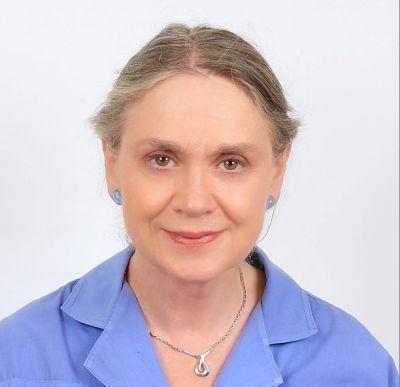University College London, UK
Brief CV
Prof Sarah (Sally) Price FRS, FRSC is a theoretical chemist who did a BA and then PhD at Cambridge University, under the supervision of Anthony Stone, working on modelling the intermolecular forces between two hydrogen molecules.
She then went to University of Chicago, as a postdoc working with Jeremy Burdett, before returning to Cambridge to continue work with Anthony Stone on developing anisotropic atom-atom intermolecular potentials from the charge densities of the molecules.
On getting a Lectureship at University College London, her first grant was to adapt a crystal structure modelling code to use distributed multipoles for rigid organic molecules, starting the development of DMACRYS which now uses a range of anisotropic atom-atom intermolecular potentials and is used in organic Crystal Structure Prediction and property modelling.
In 2004 she led a large consortium project “Control and Prediction of the Organic Solid State” (CPOSS) which developed organic crystal structure and property prediction simulations in collaboration with a wide range of experimental and computational scientists. She is currently a leader of the in-silico working group of the COST action BEST-CSP. Sally has been author on over 200 scientific papers. She was elected a Fellow of the Royal Society in 2017.
Lecture 46: Sarah L Price
Organic Crystal Structure Prediction: What is Needed
for Confident Prediction of Polymorphs?
Sarah (Sally) L Price,
University College London, UK
Abstract
Computational crystal structure prediction (CSP) codes seek to find the most thermodynamically stable crystal structure from the molecular diagram. This has been so successful that CSP is now widely used in industry.1, 2 In principle, CSP could be the first stage in the digital design of the crystallisation process though using the predicted crystal structure to estimate the morphologies, growth rates and solubilities in different solvents.3 However, polymorphism considerably complicates our understanding of crystallisation. Most metastable polymorphs are also generated in a CSP study as local minima, and indeed a CSP generated structure can provide a starting point for solving structures from powder diffraction or solid state NMR data. However, a CSP study based on lattice energies usually suggests that there could be far more polymorphs than are actually found.4, 5 This lecture will illustrate the challenges and progress made towards developing an understanding of crystallisation that could predict the polymorphs of an organic molecule. 6
All references linked off www.cposs.org.uk including
(1) Hunnisett, L. M. et al. The seventh blind test of crystal structure prediction: structure generation methods. Acta Cryst. B 2024, 80 (6), 517-547. DOI: 10.1107/S2052520624007492
(2) Hunnisett, L. M.. The seventh blind test of crystal structure prediction: structure ranking methods. Acta Cryst. B 2024, 80 (6), 548-574.DOI: 10.1107/S2052520624008679
(3) Burcham, C. L.; Doherty, M. F.; Peters, B. G.; Price, S. L.; Salvalaglio, M.; Reutzel-Edens, S. M.; Price, L. S.; Addula, R. K. R.; Francia, N.; Khanna, V.; et al. Pharmaceutical Digital Design: From Chemical Structure through Crystal Polymorph to Conceptual Crystallization Process. Crystal Growth & Design 2024, 24 (13), 5417-5438. DOI: 10.1021/acs.cgd.3c01390 .
(4) Price, S. L. Control and prediction of the organic solid state: a challenge to theory and experiment. Proc Roy Soc A 2018, 474 (2217), 20180351. DOI: 10.1098/rspa.2018.0351.
(5) Price, S. L. Why don't we find more polymorphs? Acta Cryst. 2013, 69, 313-328. DOI: 10.1107/S2052519213018861.
(6) Price, S. L. Is zeroth order crystal structure prediction (CSP_0) coming to maturity? What should we aim for in an ideal crystal structure prediction code? Farad. Discuss 2018, 211, 9-30. DOI: 10.1039/c8fd00121a.


